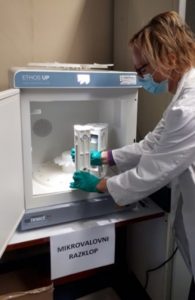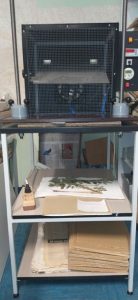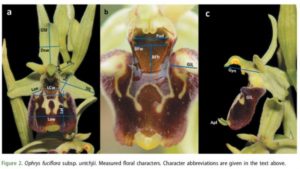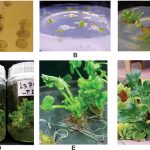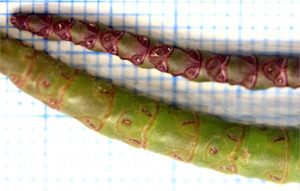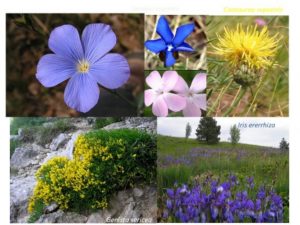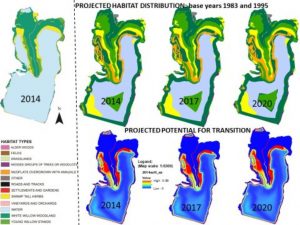ABOUT US
The Geobotany Department at FNM (at that time still at the large PeF UM) was formed by the systematisation of a professor and assistant professor in 1995. The name “geo” botany places research and teaching about plants in a spatial framework – communities, vegetation, habitats, ecosystems, or landscapes. It include research in geographic, geologic, ecological, socio-economic or historical contexts.
In the time since its establishment, the department has expanded and strengthened its personnel, and it has also expanded its field of activity, educated many graduates, masters and doctoral students, young researchers, who then obtained professional and scientific titles. Today, they work in education, in the local environment and abroad, they are also employed in responsible positions in public administration, economy, science and nature protection. The department hosted many researchers from abroad who came on scientific visits lasting from a week to several months.
Members of the Department of Geobotany are involved in many professional associations at home and abroad, e.g. Eurasian Dry Grassland Group (EDGG), European Vegetation Survey (EVS), Botanical Society of Slovenia, Eastern Alpine and Dinaric Society for Vegetation Ecology, Slovenian Society for Plant Biology (SDBR), European Societies of Plant Biology (FESPB), International Association of Plant Biotechnology (IAPB).
The Department of Geobotany periodically organizes or co-organizes international conferences. Within the framework of the international association EDGG (Europaean Dry Grasslands Group), in May and June 2019, we co-organized an international symposium on grasslands entitled: “Various grasslands in the Palearctic – a treasure without economic value?” The symposium took place at the Charles and Franz University in Graz (Austria) between May 29 and June 1, 2019, while the professional excursion was entirely in Slovenia (June 2 – June 5, 2019). As part of the excursion, we visited three areas of Slovenia – Goričko, Haloze and Karst. (link: https://edgg.org/egc/pastEGC and https://edgg.org/sites/default/files/page/Magnes_et_al_PG44_16-25.pdf).
ORGANIZATION AND EQUIPMENT
Head: Prof. Jana Ambrožič-Dolinšek
The laboratory is dedicated to scientific research, teaching and professional work in the field of plant physiology, plant biotechnology, plant tissue culture and cryopreservation of plant tissues.
Equipment:
- growth chamber,
- laminar-flow chamber,
- other small equipment: pH-metre, glass bead sterilizer, stereomicroscope, stirrer, autoclave,
- microwave for green extraction of natural products and acid digestion of materials.
Head: Tch. Asst. Veno Jaša Grujić
The laboratory is equipped with all necessary equipment for algae cultivation. It includes air pumps, a filtration system, culture vessels, a carbon dioxide supply system, a pH control system, and LED lighting with the possibility of setting different combinations of wavelengths, intensity, and lighting time.
Head: Assoc. Prof. Danijel Ivajnšič
The laboratory is equipped with all necessary equipment for obtaining and processing spatial data. This includes a thermal camera with high frequency image capture, meteorological station, a high precision GPS device (GNSS), and software tools for processing remote sensing data (TerrSET).
Head: Assoc. prof. Sonja Škornik
The laboratory is equipped with all devices for the needs of ecology and plant biology. It includes long-term data capture devices of soil temperature and moisture, a microstation for long-term data acquisition devices of field measurements of water and soil quality (datalogger), instrument with probes for measuring temperature, conductivity, pH and oxygen.
Head: Asst. Prof. Igor Paušič
In our herbarium collection we keep about 3200 herbarium poles from the entire Slovenia and from abroad. We have a rich collection of plant tissue preparations, which are kept in fixatives and are used for laboratory excercises. The herbarium also includes a larger drying chamber intended for research work and for students to carry out seminar exercises.
RESEARCH AREAS
We are interested in:
- grassland vegetation studies https://doi.org/10.1515/biol-2016-0023
- plant traits in relation to flora, chorology, vegetation and biogeography
- Functional approaches to vegetation research: the example of grasslands https://doi.org/10.1080/11263504.2017.1418451
- A phylogenetic approach to vegetation research: https://doi.org/10.1007/s00442-015-3295-5
- vegetation history
- succession studies: https://doi.org/10.3161/15052249PJE2017.65.2.003
- Extreme habitats: cliffs, river gravel bars, coastal wetlands and vegetation response
- Primary succession on river gravel bars: https://doi.org/10.3161/15052249PJE2017.65.2.003
- Primary succession in coastal wetlands of the Northern Adriatic Sea
We are investigating:
- Flora of Slovenia, Balkans and the Mediterranean

We are working on:
- Development of in vitro methods for propagation, preservation and storage by freezing of rare, protected or endangered plant species (Hladnikia pastinacifolia, Apium repens, Sempervivum juvanii).
- Investigation of phytoremediation potential of various aquatic plants (Lemna minor, Apium repens and Berula erecta) in tissue culture for uptake of various heavy metals and other trace elements.
- Investigation of the effect of selenium (Se) on plants in culture and the possibility of protecting plants with this element.
- Use of aquatic plants (Lemna minor) in toxicity tests for water
- Analysis of hormonal status of plants by bioassays for plant hormones auxins and cytokinins.
- Investigation of the phytoremediation potential of fast-growing terrestrial plants (Miscanthus sinensis). Possible use of this energy plant Miscanthus sinensis for environmental detoxification.
- Cultivation of the energy crop Miscanthus sinensis on degraded land: Dogoše landfill, Pobrežje landfill; collaboration with Snaga d.o.o.
- Bioreactor system to study the production of biomass and astaxanthin in the algae Haematococcus pluvialis.
We are working on:
- Revitalization and/or reintroduction of rare species: Apium repens
- Population and genetic studies of rare species: Linnaea borealis
- Ex situ plant conservation https://hrcak.srce.hr/166909 https://link.springer.com/article/10.1007/s11627-018-9917-y
We work in the following areas:
- Habitat mapping, GIS
- Socio-economic impact on land-use and vegetation
- Fragmentation of populations and habitats
- Metapopulations and metacommunities
Our research covers the fields:
- Renaturation studies
- Habitat restoration
- Grassland management
- Green infrastructure
- Agro-environmental schemes for grassland biodiversity: https://doi.org/10.1016/j.landusepol.2018.10.013; https://doi.org/10.1017/S0376892920000119
We are interested in:
- Urban heat islands and vegetation
- Sea level rise
- Global warming and plant phenology
We are investigating:
- use of plants with the aim of enriching the daily diet with a wide range of wild plants.
- traditions of our ancestors in use of plants for nutritional purposes, the preparation of healing potions and the use of their medicinal and magical active ingredients.
- traditions of the plants use for the construction and decoration of homes.





